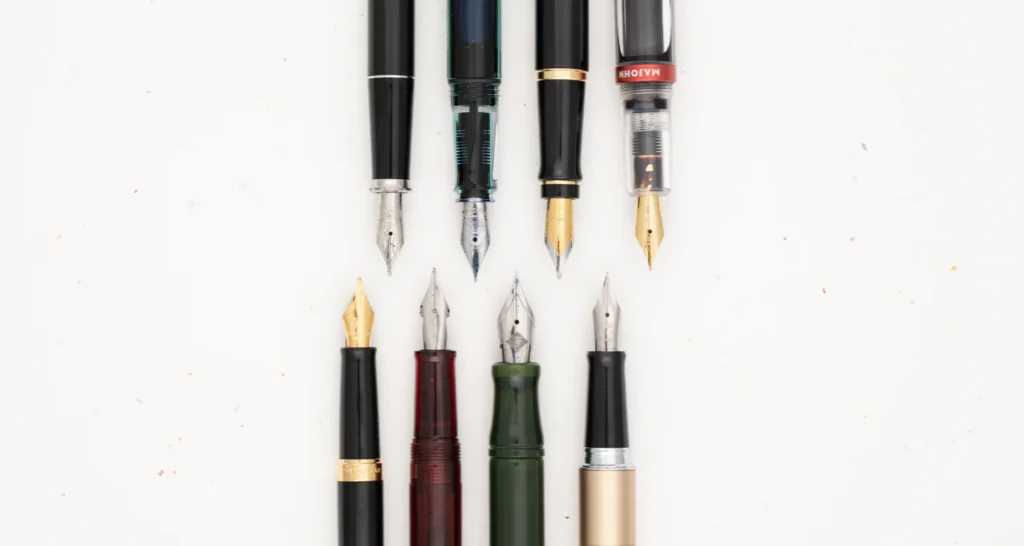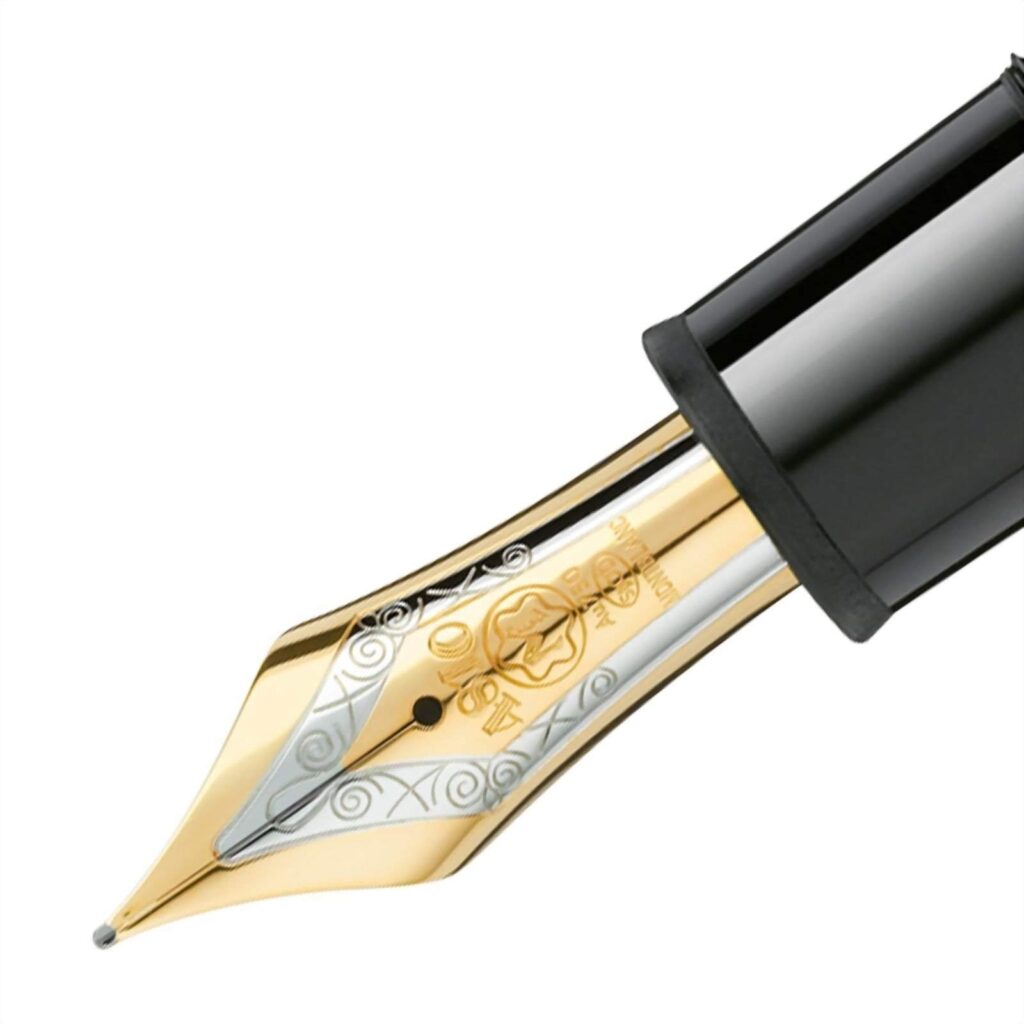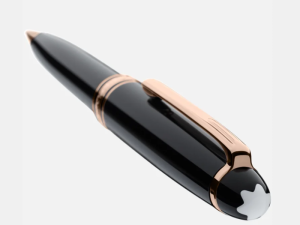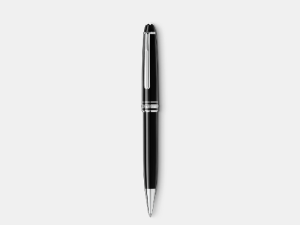Exploring the Charm of Fountain Pens: Understanding Their Unique Features and Appeal
In an era dominated by digital technology, the fountain pen continues to hold an enduring allure and fascination for many. These pens are not merely tools for writing but are revered as pieces of art and emblems of personal style. The charm of fountain pens lies in their timeless elegance, intricate design, and the tactile connection they offer between the writer and the paper. Unlike the ephemeral nature of digital text, writing with a fountain pen is a deliberate act that embodies the beauty and permanence of the written word. As we delve into the world of fountain pens, we explore their unique features and appeal, understanding why these classic writing instruments remain cherished in a high-speed, digital world.

The History and Evolution of Fountain Pens
The journey of the fountain pen spans centuries, tracing back to early designs that sought to improve the writing experience. Initially, writers relied on quills and dip pens, which required frequent dipping in ink. The desire for a more efficient tool led to the invention of the fountain pen, capable of holding ink within its body.
The evolution of the fountain pen began in earnest in the 19th century, with innovators creating the first practical models that included an internal ink reservoir. This development marked a significant leap forward, allowing for longer writing sessions and greater convenience. Over the years, technological advancements and craftsmanship have refined the fountain pen’s design, improving ink flow, reducing leaks, and enhancing overall reliability.
Historical and cultural factors have played a pivotal role in shaping the design and popularity of fountain pens. In the early 20th century, the pen became a symbol of status and education, often associated with the professional and the literate. As time progressed, the fountain pen’s aesthetic and functional aspects began to reflect the artistic and cultural trends of the era, with elaborate designs and innovative filling mechanisms.
Today, fountain pens are celebrated not only for their practical utility but also for their artistry and heritage. They represent a bridge between the past and the present, combining traditional craftsmanship with modern technology to create writing instruments that are both functional and beautiful. The history of the fountain pen is a testament to human ingenuity and the enduring value of written expression.
Anatomy of a Fountain Pen
Understanding the anatomy of a fountain pen is essential to appreciating its function and design. Each part plays a critical role in delivering the unique writing experience that these pens are known for:
- Nib: The nib is the heart of the fountain pen, the point where ink meets paper. Made from materials like gold, steel, or titanium, the nib’s shape and size determine the character of the writing it produces, from fine, precise lines to broad, expressive strokes.
- Feed: Beneath the nib, the feed regulates the flow of ink from the reservoir to the nib. Its design ensures a consistent, smooth flow, preventing both leaks and dry spots.
- Converter/Cartridge: The ink reservoir in a fountain pen can be either a replaceable cartridge or a refillable converter. Cartridges offer convenience, while converters allow for the use of a wider range of inks and are more environmentally friendly.
- Cap: The cap protects the nib when not in use and often contains a clip for securing the pen in a pocket or notebook. The cap’s seal prevents ink from drying out, ensuring the pen is ready to write whenever needed.
- Barrel: The barrel houses the ink reservoir and provides the main structure of the pen. It is designed to be comfortable to hold, with a balance and weight that contribute to the pen’s overall feel and ergonomics.
Each component of the fountain pen is a marvel of engineering, designed to work in harmony for an optimal writing experience. From the precise engineering of the nib to the functional elegance of the barrel, the anatomy of a fountain pen reveals the complexity and beauty of this classic writing instrument.
The Nib: Heart and Soul of the Fountain Pen
The nib is the defining feature of a fountain pen, playing a crucial role in its functionality and the writing experience it provides. Made from various materials such as gold, steel, or titanium, nibs come in different shapes and sizes, each offering unique writing characteristics.
- Materials: Gold nibs, known for their flexibility and smoothness, adjust to writing pressure and style, allowing for line variation and a luxurious feel. Steel nibs, on the other hand, offer durability and a firmer writing experience, while titanium nibs provide a unique combination of strength and flexibility.
- Shapes and Sizes: Nibs range from extra fine to broad, affecting line width and ink flow. Some nibs feature specialized shapes, like italic or stub, to produce distinctive writing styles, such as calligraphic effects.
- Customization: Many enthusiasts turn to nib customization to tailor their writing experience precisely. Custom nib work can adjust ink flow, smoothness, and line width, creating a nib that complements the user’s handwriting style and preferences perfectly.
The nib is more than just a tool for transferring ink to paper; it is the heart and soul of the fountain pen, responsible for the character and quality of the writing it produces. Understanding and choosing the right nib is essential for anyone looking to capture the full joy and potential of writing with a fountain pen.

Ink and Filling Systems: A World of Choices
The ink and filling systems are integral components of the fountain pen, offering a variety of choices that cater to different preferences and writing needs.
- Ink Types: Fountain pen inks come in a spectrum of colors, from classic blacks and blues to vibrant hues and special effects like shimmer and sheen. The ink’s formulation affects its flow, drying time, and permanence. Some inks are water-resistant or archival, providing durability for important documents.
- Filling Systems: The method by which a fountain pen is refilled with ink defines its filling system. Common types include:
- Cartridge: The simplest system, using pre-filled ink cartridges that are easy to replace but limit ink variety.
- Converter: A refillable mechanism that allows for using bottled inks, offering a wider range of ink choices and the flexibility to switch colors.
- Piston: Integrated into the pen, this system draws ink directly into the barrel, providing a larger ink capacity and a seamless design.
- Vacuum: Creates a vacuum to fill the barrel with ink, offering a significant ink capacity and an engaging filling experience.
Each filling system has its advantages, from the convenience of cartridges to the capacity and ink variety afforded by piston and vacuum fillers. The choice of ink and filling system significantly impacts the fountain pen‘s functionality, writing experience, and personalization, making it essential to consider these aspects when selecting the perfect pen.
Writing Experience: Why Fountain Pens Stand Out
The writing experience with a fountain pen is distinct and refined, setting it apart from other writing instruments. This unique experience is shaped by several factors that contribute to the pen’s appeal:
- Line Variation: Unlike ballpoint or rollerball pens, fountain pens allow for varying line widths based on pressure and angle, offering a dynamic and expressive writing style. This variation adds character and depth to handwriting, making it more personalized and aesthetically pleasing.
- Smoothness: The glide of a fountain pen nib on paper is notably smooth, reducing friction and enhancing writing comfort. This smoothness encourages a more relaxed and fluid writing motion, which can improve handwriting quality over time.
- Ergonomics: Fountain pens are designed to fit comfortably in the hand, with a balance that minimizes strain during writing. The need for less pressure to produce ink flow also reduces hand fatigue, making fountain pens ideal for extended writing sessions.
- Writing Quality: The ink flow from a fountain pen is consistent and even, contributing to clear and precise writing. The variety of inks available for fountain pens also allows for customization of color and properties, further enhancing the writing experience.
These characteristics make writing with a fountain pen not just a task, but a pleasure, offering a sense of satisfaction and personal expression that is hard to replicate with other pens. For many, the act of writing with a fountain pen becomes a cherished ritual, reflecting the joy and artistry of the written word.
Fountain Pens as Collectibles and Status Symbols
Fountain pens transcend their primary function as writing instruments to become coveted collectibles and symbols of status and sophistication. Their appeal as collectible items lies in a combination of factors:
- Rarity: Limited edition fountain pens, often produced in restricted quantities, are highly sought after by collectors. Their rarity contributes to their value and desirability, making them prized possessions in the pen community.
- Brand Heritage: The heritage and history of a pen brand play a significant role in its collectibility. Brands with storied pasts, like Montblanc or Parker, are revered not just for their quality but also for their legacy in the world of writing instruments.
- Craftsmanship: Artisanal craftsmanship, intricate designs, and the use of precious materials enhance the allure of luxury fountain pens. Handcrafted pens with unique features, such as hand-turned barrels or custom nibs, are especially valued for their uniqueness and the skill involved in their creation.
- Functionality and Aesthetics: Beyond their practical use, fountain pens are appreciated for their beauty and design. Collectors often seek pens with aesthetic appeal, whether it’s through elaborate finishes, innovative mechanisms, or historical significance.
- Status Symbol: Owning a luxury fountain pen can be a statement of personal taste, professional success, and appreciation for the finer things in life. They are often used as a fashion accessory or a tool for signing important documents, serving as a subtle indicator of status and refinement.
In professional and personal settings, fountain pens serve as more than just writing tools; they are extensions of the individual’s identity and style. Whether for personal enjoyment, investment, or as a display of success, collecting fountain pens offers a fulfilling experience that combines the joy of writing with the pleasure of owning objects of beauty and significance.

Maintenance and Care: Keeping Your Fountain Pen in Top Condition
Proper maintenance and care are pivotal in preserving the functionality and appearance of a fountain pen, ensuring that it remains a joy to use and retains its value over time. Here’s how to keep your fountain pen in top condition:
- Regular Cleaning: To prevent ink clogs and ensure optimal performance, regular cleaning of the fountain pen is essential. This typically involves disassembling the pen (if possible) and flushing the nib, feed, and reservoir with cool water until it runs clear, especially when changing inks or if the pen has been idle for some time.
- Appropriate Ink Selection: Using the right ink is crucial for maintaining the health of your fountain pen. Some inks contain dyes or sediments that can clog the feed or corrode the nib over time. Opt for inks specifically designed for fountain pens and avoid using calligraphy or India inks, which are not suitable for fountain pen feeds.
- Careful Handling: Fountain pens should be treated with care to avoid damage. This includes capping the pen when not in use to prevent the ink from drying out and avoiding drops or impacts that can bend the nib or crack the barrel.
- Storage: Store your fountain pen properly when not in use. Ideally, keep it in a pen case or pouch to protect it from dust, light, and physical damage. When storing for an extended period, it’s best to clean the pen thoroughly and empty it of ink to prevent clogs and leaks.
- Professional Servicing: For high-end fountain pens, professional servicing from a qualified pen specialist can help maintain the pen’s performance and address any issues like nib alignment, ink flow problems, or mechanical repairs.
By adhering to these care and maintenance practices, your fountain pen can continue to provide a superior writing experience, maintain its aesthetic appeal, and hold or even increase its value as a collectible item.
Fountain pens, with their unique features and timeless appeal, continue to enchant both enthusiasts and casual users in a digitally dominated world. The charm of a fountain pen lies in its ability to merge artistry with utility, offering a writing experience that is both elegant and personal. Through this exploration, we’ve delved into the intricacies that define fountain pens, from the craftsmanship of the nib to the variety of filling systems and the allure of their collectible nature.
These distinguished instruments are more than mere tools; they are pieces of heritage and luxury that signify a love for the written word. They stand as testaments to human ingenuity and the enduring value of tactile, personal expression. As we encourage readers to explore the world of fountain pens, we invite them to discover not just a writing tool but a pathway to experiencing the profound joy and satisfaction that comes from the art of writing itself.






